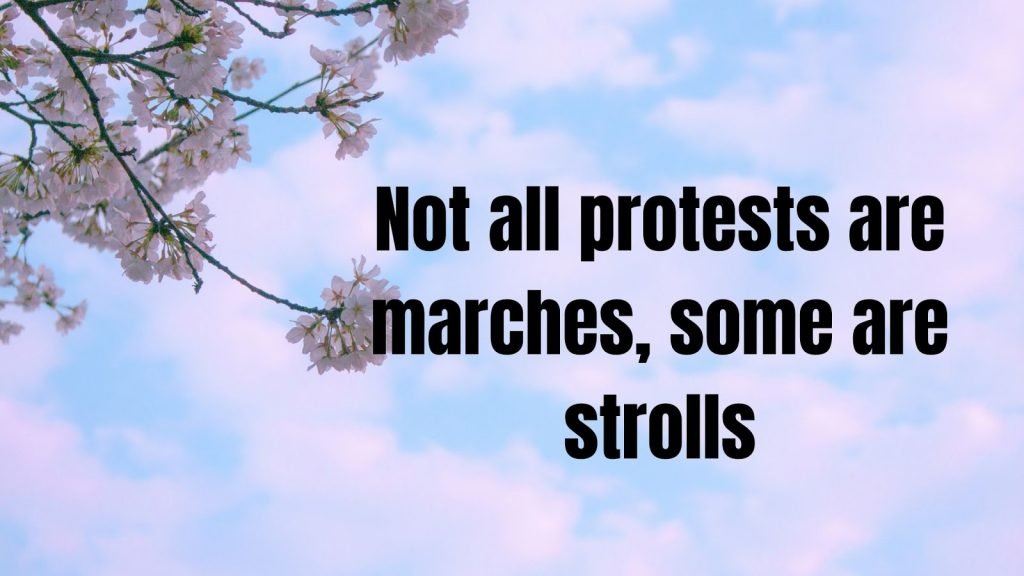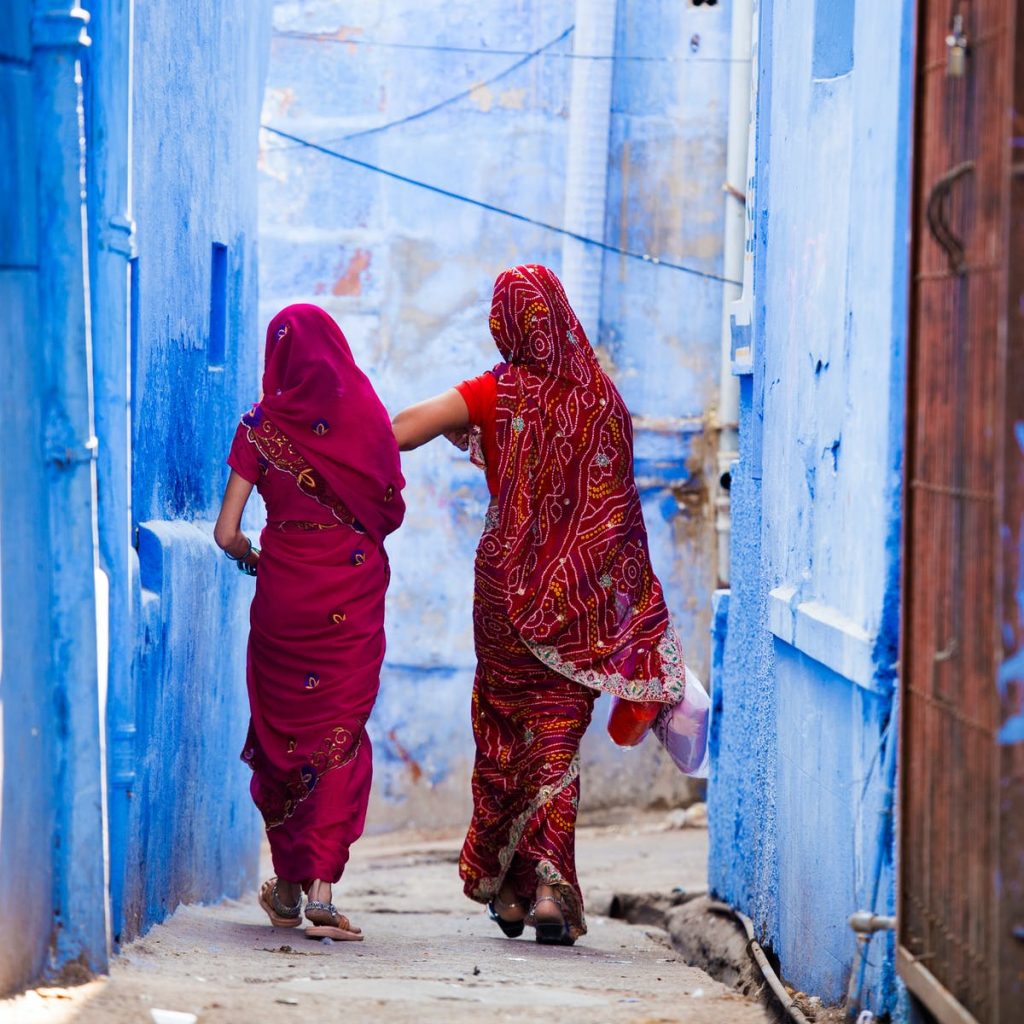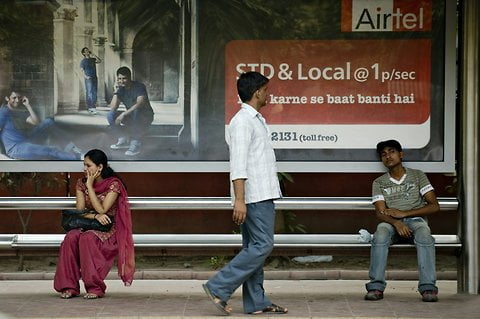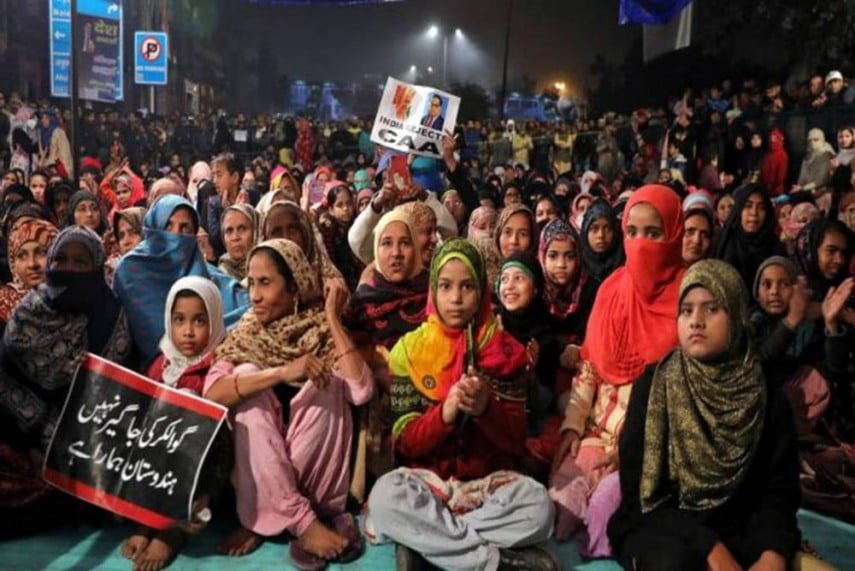The streets we walk on, often borrow a language of the community we live in. The violence of streets lies in a language that renders itself inaccessible to certain people making it almost impossible for them to assimilate into a seemingly un-gendered space. For women and people of marginalised gender in India, streets have become spaces where violence is often normalised. It not only challenges the normal way of ‘doing gender’ but also drives people to strip themselves off of any visible performances of their identity. People on the street show us the way, but the question is if anyone is listening?

The most common form of violence reported is street harassment in the form of eve-teasing, stalking, and moral policing. Even though cities with their lack of emotionality, have blurred the boundaries of caste and class allowing people to retain their identity and autonomy in decision making to a certain extent, the reality is not the same for everyone. For women, streets have become spaces where they constantly try to reconcile with the idea of freedom but not without its dynamicity. The danger of being on the street at the wrong time, the wrong moment, or simply being on the unequal side of a gender power dynamic scale has created severe intellectual and social challenges.

In many ways, our streets are designed to serve cishet men, and everyone else is often left to navigate their position around these spaces with inadequate infrastructural facilities. This includes poor lighting and limited access to public spaces like parks, cafes, playgrounds, and markets. Even though streets are places that humanise people especially in larger cities, it is vital to point out that women and people of marginalised gender, who draw their identity from these spaces, often take it normatively for the gendered way in which it is designed.
Even though streets are places that humanise people especially in larger cities, it is vital to point out that women and people of marginalized gender who draw their identity from these spaces often take it normatively for the gendered way in which it is designed.
Loitering is Gendered
Much like everything else on the streets, the idea of “loitering” remains gendered. As young students moving to a new city, we imagined it to be a place where people like us could reimagine their lives as independent human beings. But the streets, with its many dangers made us realise that sadly, some people have more claim over them than others. Men could loiter around the streets aimlessly and while away hours endlessly, but for us, the street can only be a means to an end. Without a purpose, a place to go or work to do some people simply do not belong on the streets. Olivia Laing in her book The Lonely City writes about the desire to transcend the instrumentality attached with women’s access to streets,

“Walking aimlessly, walking not as a means but as an end, an ideal occupation in and of itself.”
The street is about the politics of space being played out in how each group outlines its power on the other. This politics of space is more real for women and people of marginalised gender who find it challenging to have an identity beyond their gender identity. The street for them becomes a political space that foregrounds a historic trajectory of discrimination and violence in many ways.
Also Read: Why Loiter? Book Review: Imagining Our Streets Full Of Women
The Politics of Self-Policing
The relationship that we share with our bodies and the ‘choices’ that we make about the ways in which we carry our bodies in the public realm, is shaped by our social and cultural milieu, and this becomes even more complicated in the case of women and all those whose identities have been in the margins. There are too many uncodified laws governing how one should occupy public spaces and which more often than not are regressive and limit mobility.

The places that we feel safe in, the clothes that we wear on the streets, the mannerisms that we display on the streets, and even the people we meet and the way we meet them in the public, is more than just a question of ‘personal preference’. Feminists explain these as manifestations of our internalised ideals and fears and emphasise on not looking at spaces as passive objects but as ‘agents’ and platforms of surveillance.
The places that we feel safe in, the clothes that we wear on the streets, the mannerisms that we display in the streets, and even the people we meet and the way we meet them in the public is more than just a question of personal preference.
Security is not the only reason as to why women make these decisions as Phadke et al mention; ‘mobility’ and the notion of ‘respectability’ are interlinked. For instance, a woman standing alone near a vegetable shop is ‘socially acceptable’ and even appreciated but a woman standing alone near a tobacco shop on the street is bound to make people uncomfortable. Even simple things like how we ‘choose’ to keep our hair or the volume of our laughter when we are on the streets are put under scrutiny in the process of reducing our entire identities to those ‘choices’ and we are made aware of this at a very young and impressionable age. This means that self-policing is not limited to confining ourselves to what is thought of as ‘private’ space but also the everyday decisions that we make about our bodies when we enter public spaces.
Robert Louis Stevenson in his essay Walking Tours wrote:
“Now to be properly enjoyed, a walking tour should be gone upon alone. If you go in a company, or even in pairs, it is no longer a walking tour in anything but name…“
Looks exactly like a piece of advice that a cishet white male would offer based on empirical evidence or probably, he never imagined women undertaking walking tours just for pleasure. Our social identities and realities influence the ways in which we experience streets and cities, which is why, when women take the ‘risk’ of going out on the streets to loiter (read: purposeless pleasure-seeking), they prefer to do that in a group which acts as a safety net that might go unnoticed by men.
Also Read: Womxn & Flânerie: Daring To Wander & Own The Streets Of A City Off-Limits
Acts Of Reclamation: Whom Do The Streets Belong To?
This is one of the fundamental questions that has made it to the list of feminist concerns and discourses around ‘inclusive citizenship.’
Historically, public spaces have been imagined in very masculine terms and have been exclusionary and even violent towards every other body. The patriarchal gender-based division of labor which continues to limit women to ‘caretaking’ roles inside the domestic boundaries and allowed men to access ‘public’ spaces, also reinforces the dichotomy of ‘private’ and ‘public’ and a rulebook that decides who should do what and where and at what time.
For a while now, women and the LGBTQI+ and other marginalised castes and religions have been trying to occupy their rightful space and gain social acceptance of their presence in the ‘public’ in conventional and unconventional ways; an effort towards being a part of the everydayness of the streets.
The Shaheen Bagh protest against the draconian Citizenship Amendment Act and National Register of Citizens (CAA-NRC) was also a protest against the traditional patriarchal grammar of resistance movements. Muslim women spearheaded this protest by occupying a busy street in Delhi; forging solidarities with protestors across a spectrum of genders, sexualities, ages, classes, castes, religions regionalities. The women protestors sloganeering, gave political speeches, sang songs of freedom, read the constitution, breastfed babies and plaited each other’s hair, and even invited the current Prime Minister of India—a political opponent—for tea and discussion.

For young women, university spaces including chai stalls and dhabas have become domains where a relatively egalitarian socio-spatial nature of streets can be experienced. Chai Activism emerged when a collective called @girlsatdhabas began “claiming public spaces on our own terms & whims.” Sadia Khatri, founder of the initiative, suggests that this movement sparked a change across Pakistan and brought women together to reclaim and reimagine urban public spaces around them.
Nidhi Singh, an author, and a theatre practitioner started the Why Loiter (WL)Movement in 2014, inspired by Why Loiter? Women and Risk on Mumbai Streets, a book written by Shilpa Phadke, Shilpa Ranade, and Sameera Khan, following which women and marginalised groups such as queer, trans and differently-abled and other accessed the streets after midnight and early mornings in groups, sang songs in late-night local trains, cycled around the city, ate at dhabas (roadside eateries) for pleasure and fun.
A similar campaign called #MeetToSleep was started by Bangalore-based collective Blank Noise which encouraged women to sleep in the parks. Its founder Jasmine Patheja explains the reason for driving this idea:
“The act of sleeping in the part creates a new positive memory, rooted not in fear but pride and belonging.”
A group of women from Jawaharlal Nehru University, Delhi have been trying to dismantle the casteist and classist notions attached with Bharatnatyam, a classical dance form from Tamil Nadu by performing it in public spaces like the streets, outside train stations to be witnessed by common masses. One of the artists from the group, Swathi Gangadharan says:
“Dancing is a confident flaunting on the body. And doing so in a public space, where women have been forever marginalized, is doubly subversive…Dancing is the kind of fun, a spontaneous activity that says to the world that we are not only unashamed of our bodies, we revel in our mastery over them!”
These people are bringing art on to the streets: organizing pride parades, reciting protest poetry, taking out bike rallies, loitering around dissenting against a capitalist state which continues to gravitate towards fascism and a society which enjoys drowning in a patriarchal lake.
Also Read: Women In The Streets: Walking Through History, Literature And Activism
What Do We Do?
The intersectional feminist perspective considers the acknowledgment of exclusion as the first step towards betterment and streets as they continue to exist today are ideologically and physically exclusionary in nature and might continue to be that way as long as the social hierarchies of inequality remain. Streets should be a place for people to think, create, and imagine! We talked to a few people about what could make streets more gender-sensitive. The answers were simple and frankly quite achievable. All people want are better street lighting, efficient public transport, clean and accessible public toilets, footpaths, disable friendly urban designs, and better feminists on the streets!
“Imagine our streets full of women talking, strolling, laughing, and gesticulating.
Imagine parks and beaches dotted with young women sitting alone
Imagine street corners taken over by older women reflecting on the state of the world.
Imagine maidans occupied by women workers planning their next strike for a raise in minimum wages…
If one can imagine all of this, one can impact a radically altered city!”
Featured Image Source: The Hindu
About the author(s)
Aparna is a post-grad student of Women's Studies at TISS, Hyderabad. When she is not talking about intersectional politics and re-reading The God of Small Things, she can be found listening to Mehdi Hassan while she pets cats and collects yellow flowers.




